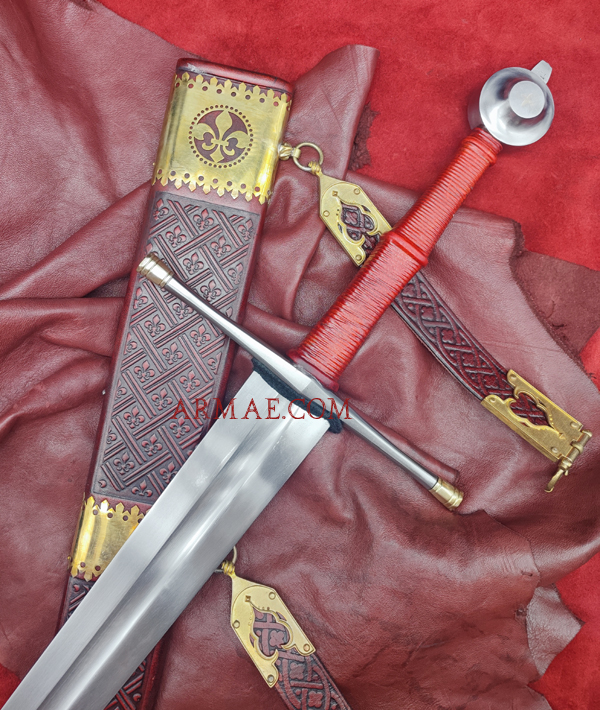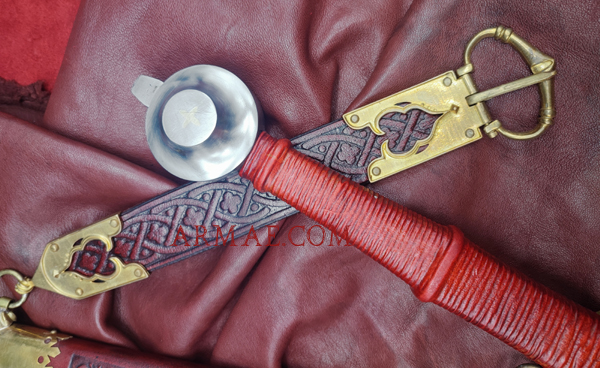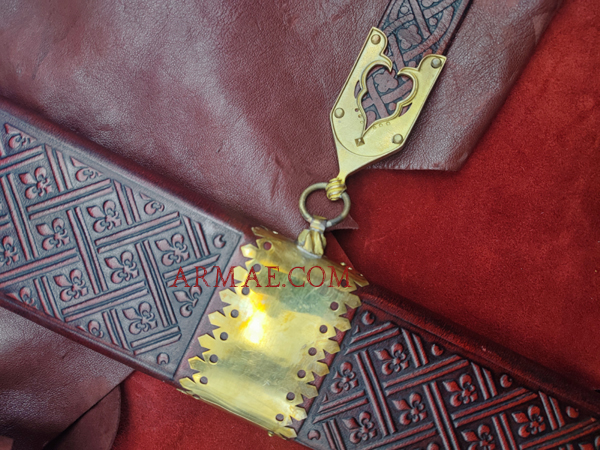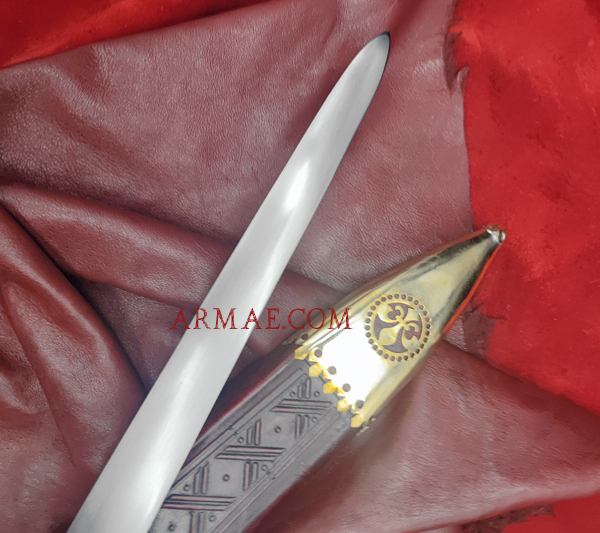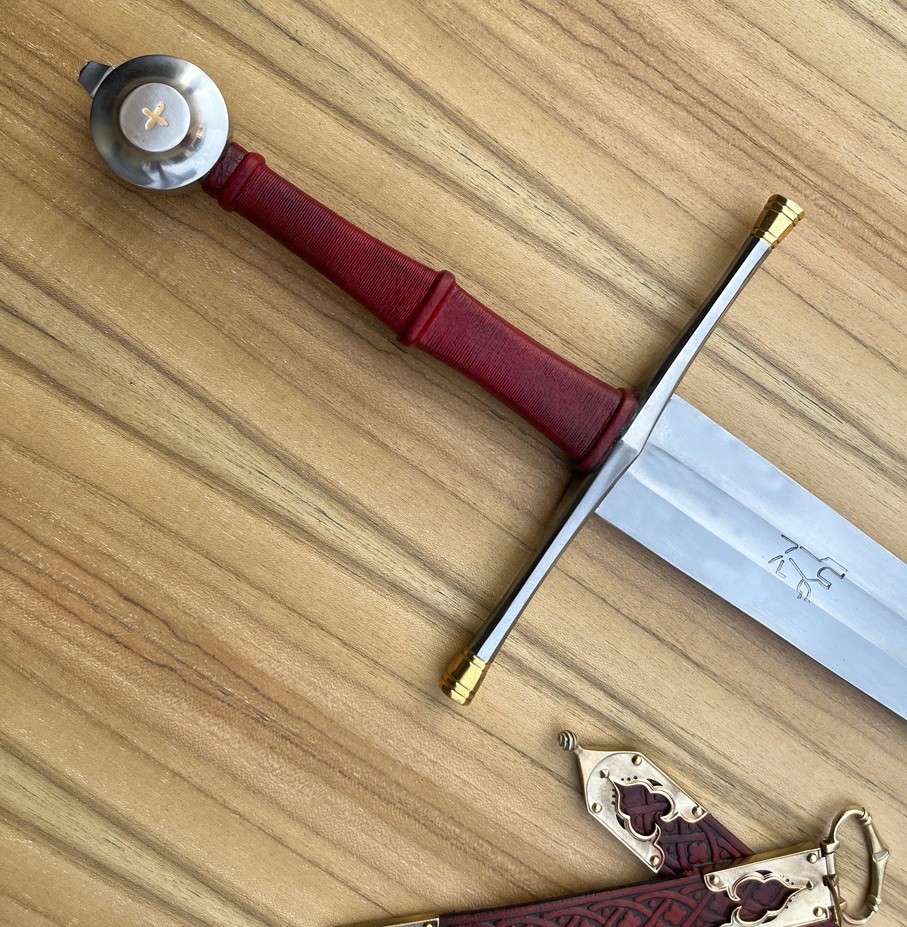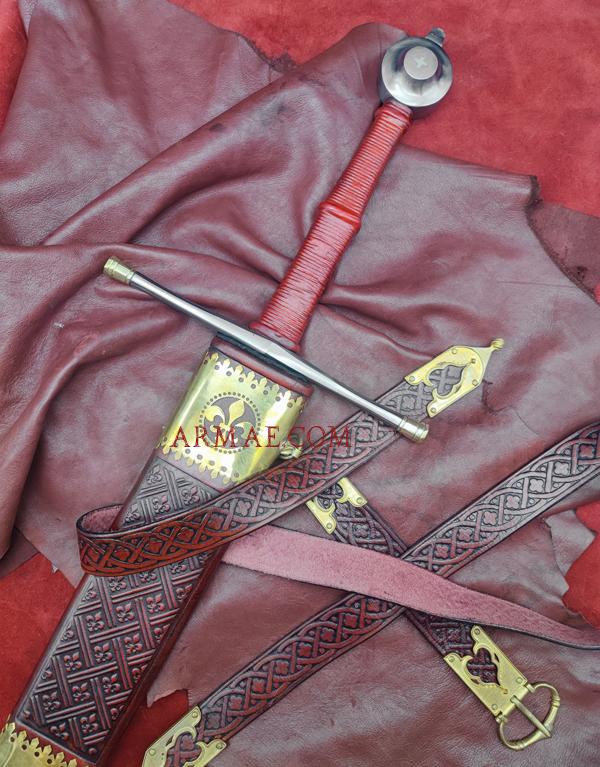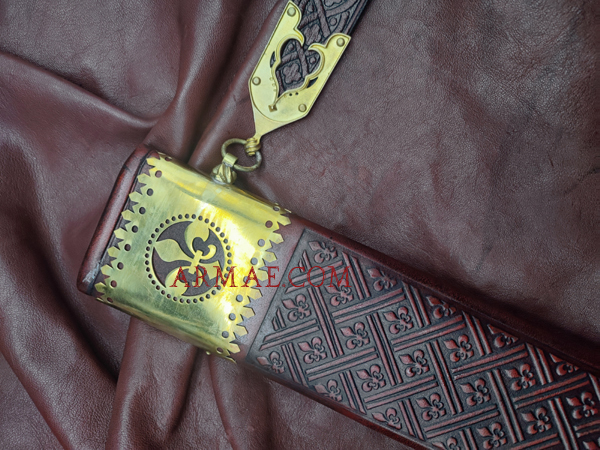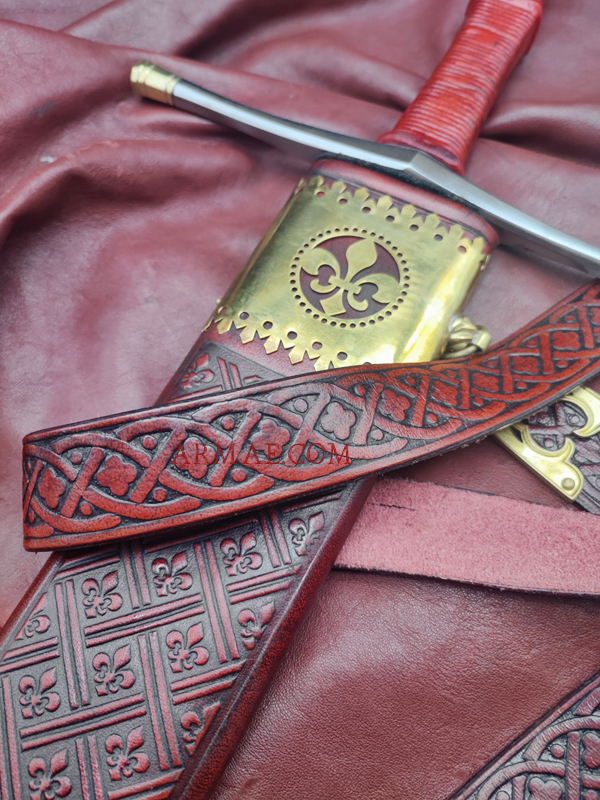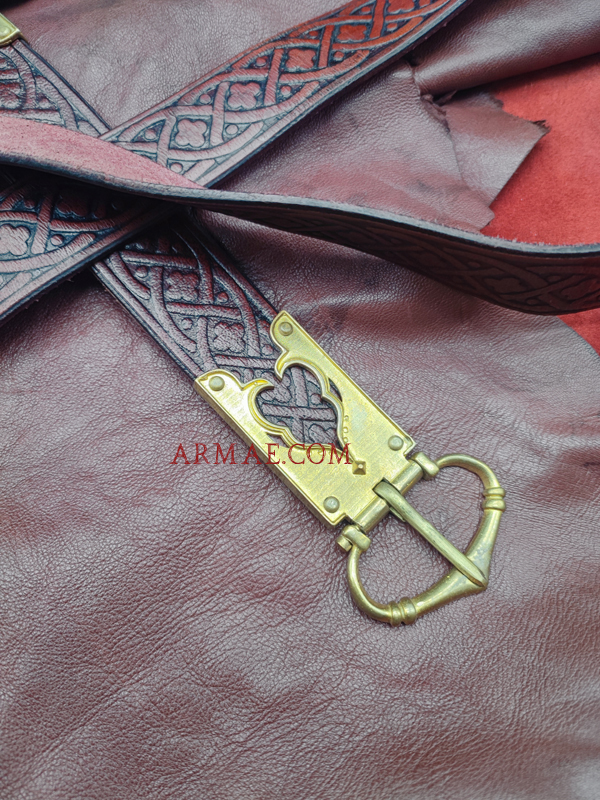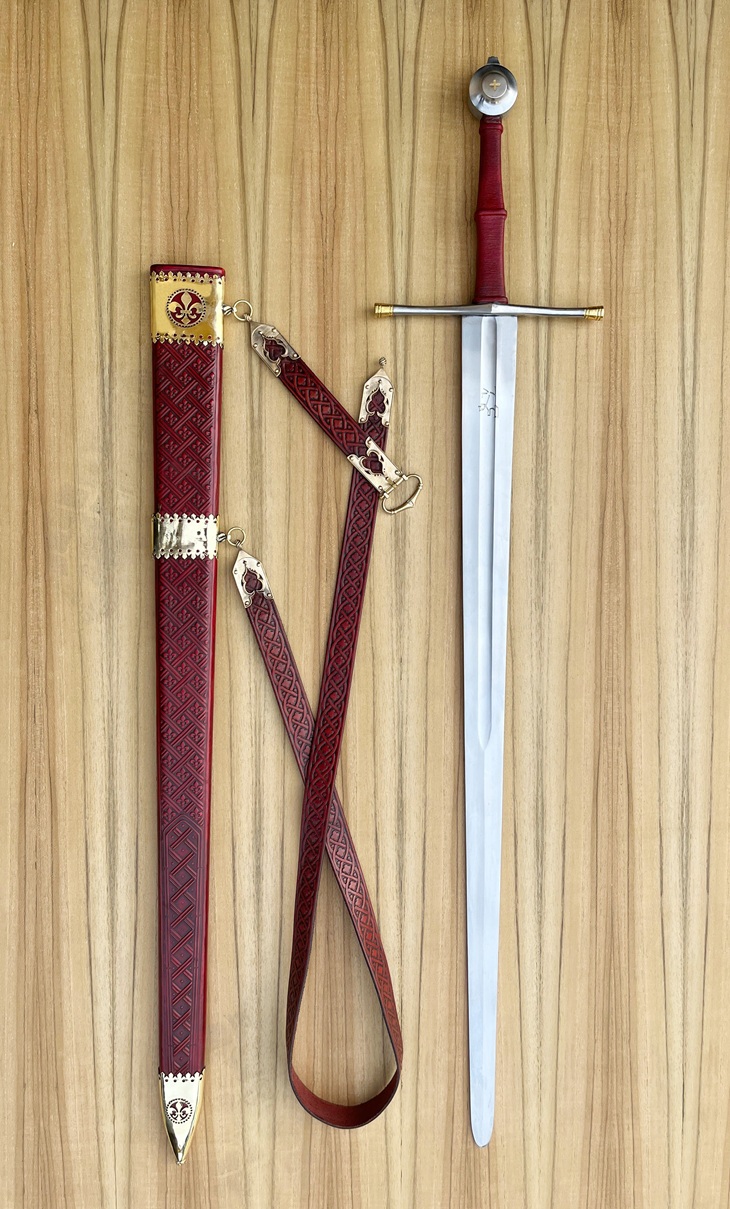
Description
Located on major trade routes, Passau was an important city in Bavaria during the Middle Ages, enriched by taxes on goods. It was the renowned seat of blacksmith guilds that produced high-quality swords, thanks to hydraulic hammers. Their blades were recognizable by the wolf engraved on them, a symbol borrowed from the coat of arms of the prince-bishop. The changing design of this wolf allowed these weapons, known as "Wolfsklingen" (wolf blades), to be located and dated. The exceptional reputation of these blades made them sought-after pieces throughout Europe, to the point that the wolf mark was even imitated by unscrupulous blacksmiths. The industrial center of Passau declined in the 17th century, notably in favor of blades made in Solingen.
This beautiful reproduction of a 14th-century sword bears the mark of the wolf of Passau, as it was drawn at that time. Its straight double-edged blade with a central groove offers a very slender and elegant profile, typical of two-handed swords from the 14th and 15th centuries. Its quillons are straight and decorated with brass tips. The round and wide pommel features a damascened cross decoration. This magnificent sword is offered with a very beautiful embossed leather scabbard, lined with a pattern of fleur-de-lis. The chape, bouterole, and brass fittings are finely pierced, as are the belt attachment elements that allow this weapon to be worn at the waist. It is a choice piece for your collection or reenactments.
Weigth 1570g. Length 115cm (blade 90cm).
